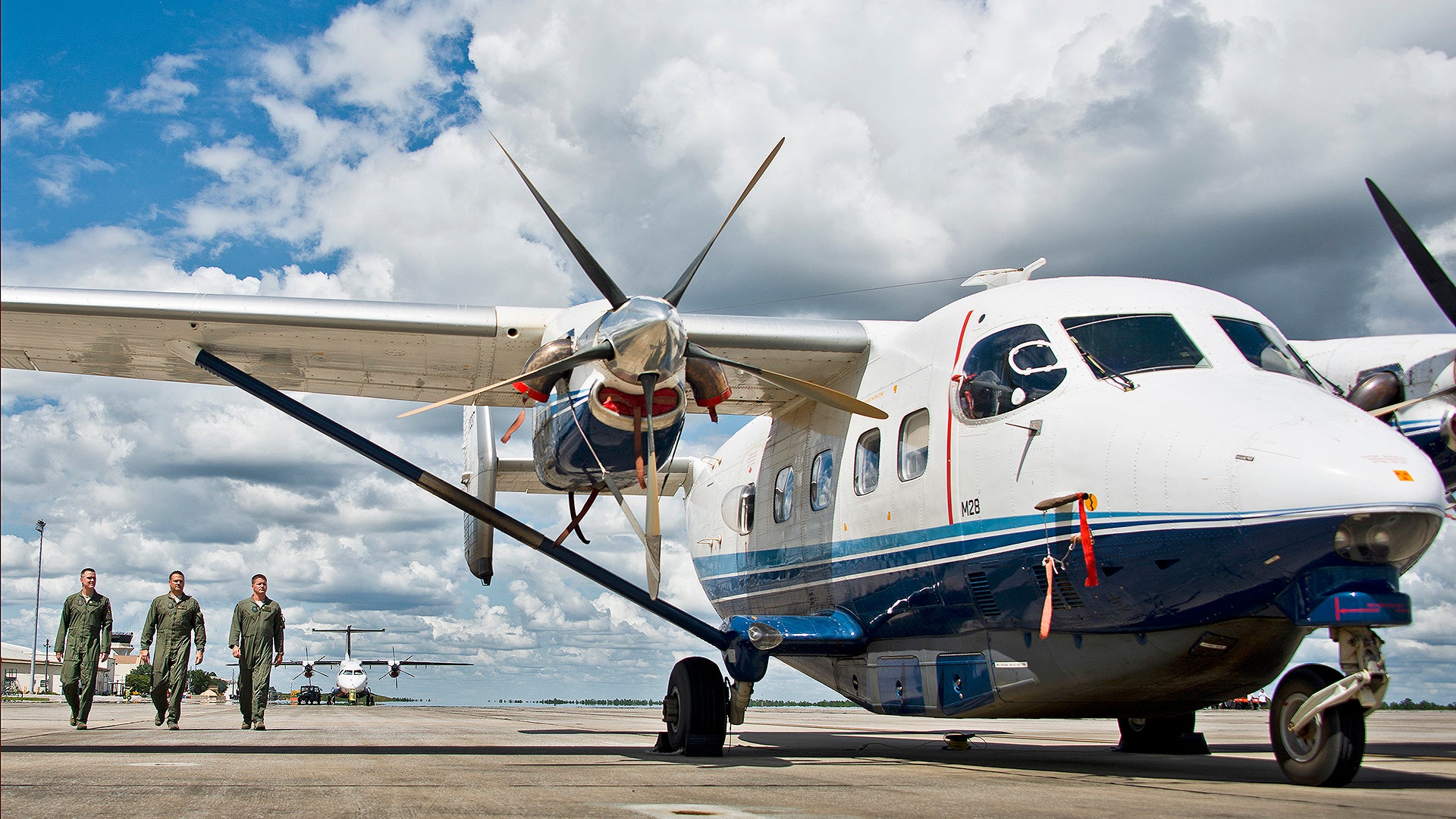A key element that makes the U.S. military so potent is its ability to start rushing troops anywhere in the world on short notice. Massive cargo aircraft, such as the C-5 Galaxy and C-17 Globemaster III, depositing troops and equipment into or near war zones is a common image of American military deployments. But as the United States has expanded its often shadowy global fight against terrorism, a secretive fleet of small transport planes has become a vital tool in those operations.
Between 2011 and 2013, aircraft from the U.S. Air Force’s 318th Special Operations Squadron flew more than 3,000 hours across five continents. The sorties included everything from basic cargo deliveries to air dropping supplies onto remote combat outposts and even psychological warfare.
“Planning, preparing, and executing various missions while providing special operations commanders with agile, intra-theater mobility support defined their mission statement, while performing from austere, semi-prepared, and blacked-out airfields with minimal support,” the annual history for that year of the 27th Special Operations Wing, which controls the 318th, explained.
The War Zone obtained this report and other records related to this unique unit’s operations through the Freedom of Information Act. As of 2012, the 318th was one of two units performing the so-called “non-standard aviation” and “light special operations forces (SOF) mobility” missions. The other was the 524th Special Operations Squadron, also part of the 27th.

In this role, the squadron had two aircraft, the single engine Pilatus PC-12 and the twin engine C-145A Combat Coyote. The latter aircraft is the Air Force’s version of the twin engine PZL M28 Skytruck. Both aircraft use the Pratt and Whitney Canada PT6A turboprop. The 524th initially flew the twin engine Bombardier Q-200, before transitioning to the similar C-146A Wolfhound, which The War Zone already explored in an earlier piece.
With a crew of two, the PC-12 can carry between six and nine passengers, depending on how much gear they have with them, or just more than 1,600 pounds of cargo. Popular in the civilian aviation world, the planes cruise at nearly 330 miles per hour and can fly more than 1,800 mile routes depending on their load.
Derived from the Soviet-era Antonov An-28, the M28 can lug 5,000 pounds of supplies or nearly 20 combat-equipped troops. It has a small rear ramp so the crew can air drop packages or individuals can parachute out. The Skytrucks have a relatively short range of less than 1,000 miles and a similarly modest cruising speed of just shy of 170 miles per hour.
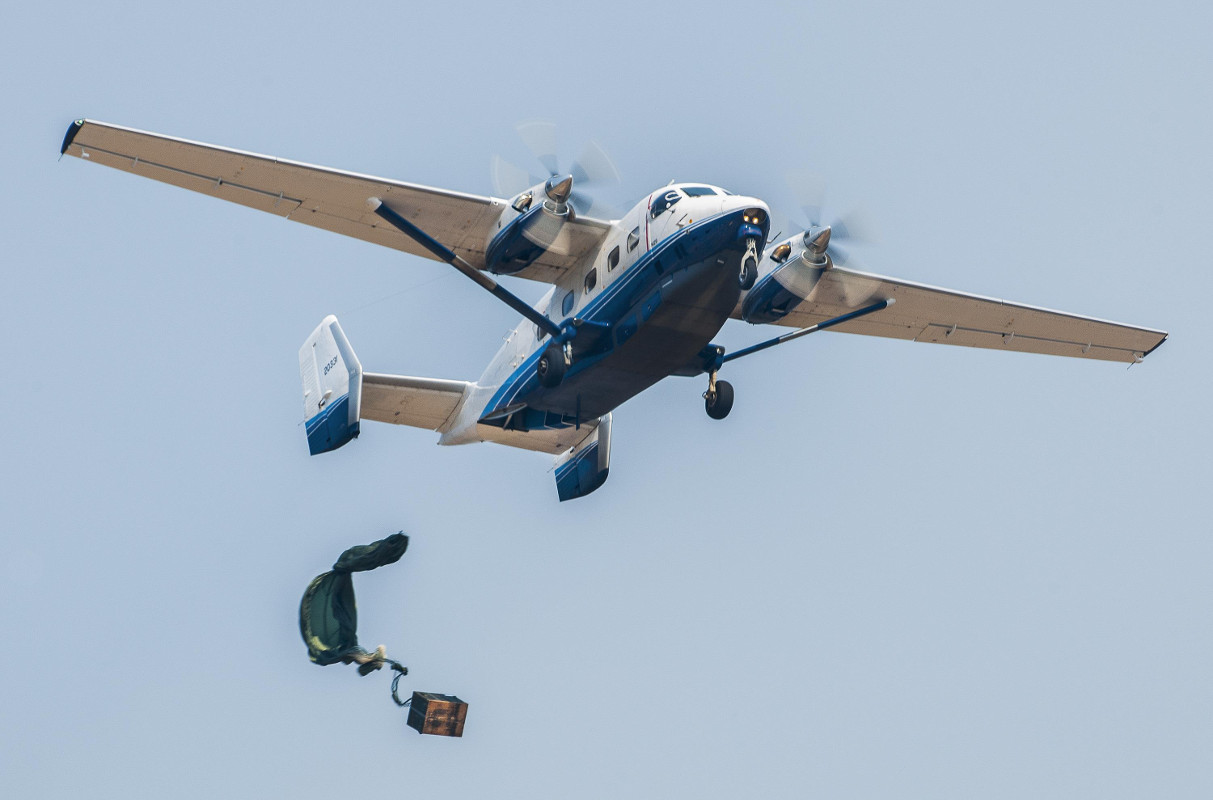
For the U.S. military’s special operators, the two aircraft’s main benefits were their ease of operation and relatively low maintenance costs, as well as their ability to operate from small and unimproved airstrips. Boeing designed the C-17 to have impressive short take off capabilities for its size, but it still needs well over a mile of runway usually to get into the air. By comparison, the PC-12 only needs about half that to get airborne, and with lighter loads this requirement decreases even further.
It didn’t hurt that the aircraft were common sights at airports around the world. Initially the Air Force flew both the PC-12s and C-145s with civilian-style paint jobs and with civil registration codes. These features helped aviators keep a low profile on sensitive missions, particularly in Africa, Latin America, and Southeast Asia. Still, it was hard to hide various bits and bobs protruding from the USAF’s PC-12s in particular, such as various communications antennas, which made the aircraft stand out to the trained eye compared to their civilian counterparts.
In 2011 and 2012, the 318th’s PC-12s flew the bulk of their sorties in the Philippines, as part of the American military assistance mission in that country. As part of Operation Enduring Freedom-Philippines (OEF-P), U.S. special operators worked with Filipino security forces primarily to battle Abu Sayyaf, an Islamist terrorist group within the archipelago, and Jemaah Islamiyah, a regional Islamist terrorist organization. Both had ties to Al Qaeda and sought to attack security forces and kill or kidnap civilians, especially foreigners, throughout the region.
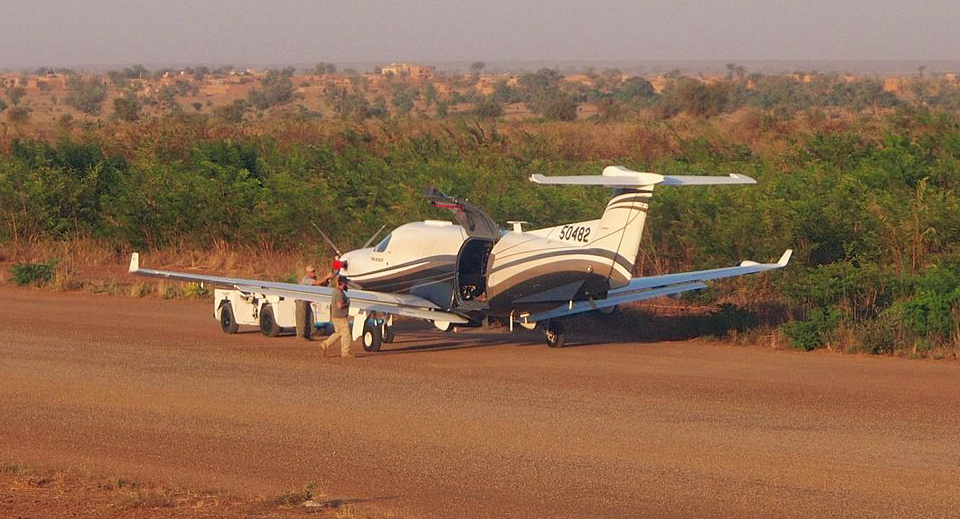
During the year, the PC-12s flew cargo and personnel to and from forward bases and other sites around the country’s southern region. In total, the crews moved more than 3,100 passengers and delivered more than 230,000 pounds of cargo. OEF-P officially ended in 2015, but the Pentagon continues to support the Philippines counter-terrorism campaigns.
From bases in Germany, additional PC-12s performed similar duties across Europe and Africa. Compared to their activities in the Philippines, the planes flew just 133 sorties and moved 27,000 pounds of cargo. Many of these missions were to or from Entebbe International Airport in Uganda. This was the hub of the American mission to aid African troops across four countries in their effort to break the Lord’s Resistance Army (LRA) rebel group and hopefully apprehend its enigmatic leader, Joseph Kony.
For more than two decades, Kony and his group had perpetrated a reign of terror across Central Africa, becoming especially known for abducting hundreds of children to fight as child soldiers or serve as sex slaves. In October 2011, President Barack Obama approved plans to send special operators to advise and assist local forces and provide logistical support – including aerial mobility with military planes like the PC-12s and contractor-operated aircraft – as part of Operation Observant Compass.
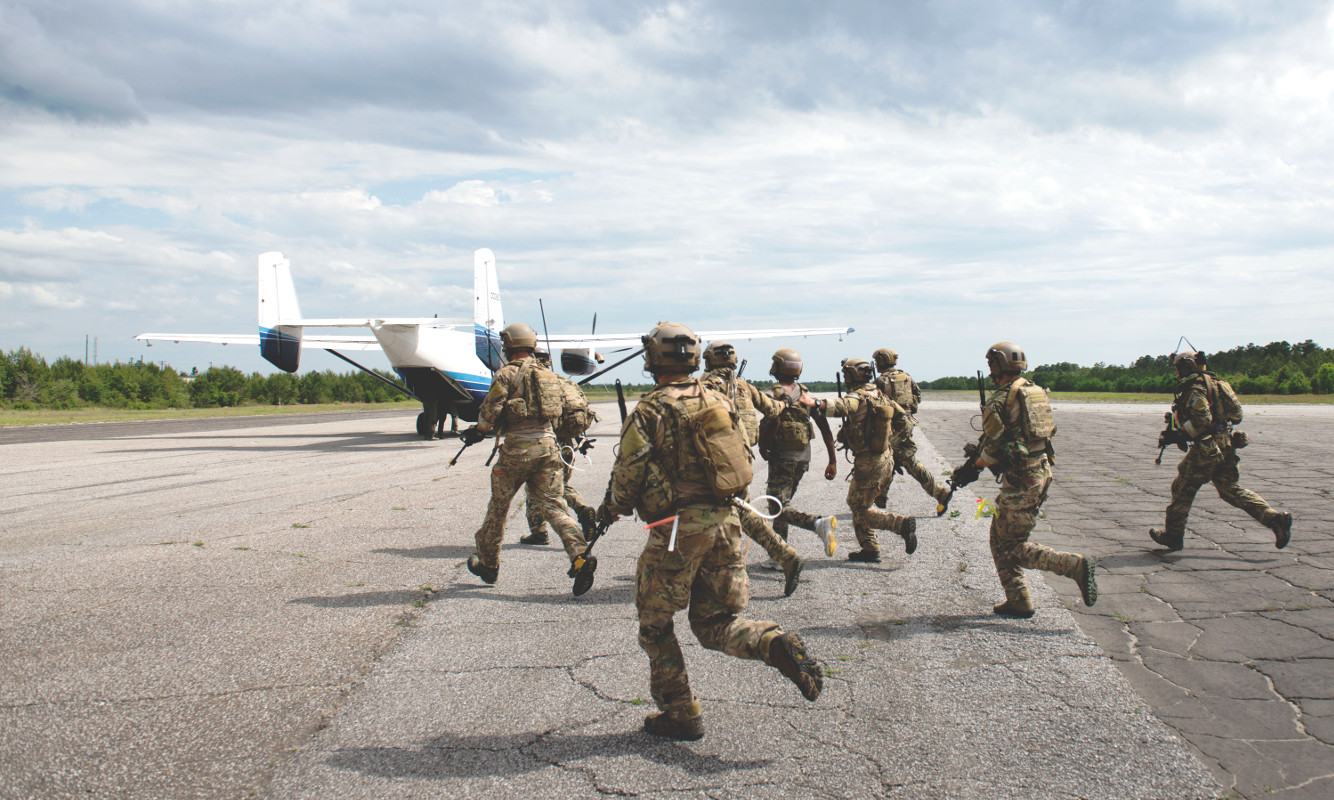
The C-145s were less active, but no less vital to special operations forces activities. In January 2011, the 318th sent a detachment of Combat Coyotes to support operations in Afghanistan. On Dec. 18, 2011, one of the aircraft veered off a short, dirt-strip runway near the town of Qalat and flipped over. Though no one was injured, the plane was a total loss.
The rest of the aircraft continued flying in the Central Asian country until May 2012. During the deployment, crews dropped more than 3,200 pounds of supplies onto forward operating bases and unloaded more than 345,000 more pounds of equipment and gear on the ground. Afterwards, they moved to Uganda to participate in Observant Compass missions, shuttling more than 100,000 pounds of cargo and nearly 250 passengers to remote sites in Central African Republic, Democratic Republic of Congo, and South Sudan.
In addition, both types of aircraft flew sorties in Latin America from Soto Cano Air Base in Honduras. This had been the site of the 318th’s first operational deployment in 2009 and the squadron had maintained a steady presence at the base afterward. Though the 2012 history does not explain what mission the aircraft supported in the region, it is likely the planes moved cargo and personnel around as part of both counter-drug and counter-terrorism operations. The Pentagon has been actively involved in fighting drug trafficking in both Central and South America since the 1980s.
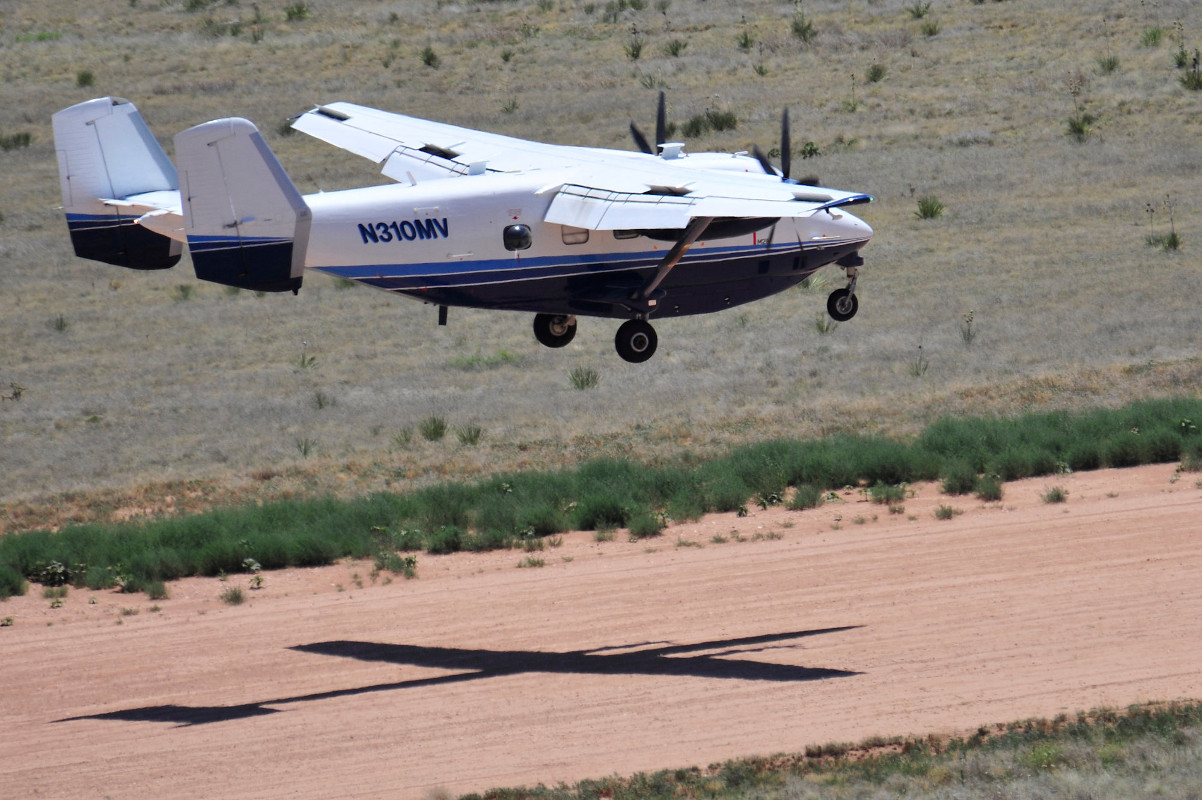
Then, in 2008, U.S. Southern Command also kicked off a push against international terrorism in the region, dubbed Operation Enduring Freedom- Caribbean, Central America (OEF-CCA). American commanders in the region expressed concerns that Islamist terrorist groups could be working and trading weapons and knowledge with drug cartels. A U.S. special operations task force coordinated this effort from Soto Cano.
The 318th’s activities were much the same the next year. The 318th “compiled 8,544 flight hours with 4,500 of those hours in support of joint special operations forces on five separate continents,” the 2013 historical review of operations across the 27th noted.
From Entebbe, C-145s brought more than 135,000 pounds of fuel to forward sites to support teams tracking Kony and his fighters. In another instance, the planes moved 1,600 pounds of ammunition to help a joint special operations element in a remote location somewhere in Central Africa. On top of that, the Combat Coyotes began dropping leaflets imploring LRA members to abandon the group and rejoin society, reportedly generating 30 defectors in one month of operations.
In Europe, the squadron’s PC-12 helped bring in equipment to set up a new airstrip to support the NATO-led peacekeeping mission in Kosovo. Another one of the aircraft raced to an unspecified location in Latin America to take an injured U.S. Army diver from a location in the field to a a proper hospital.

But at the same time, the 318th was experiencing significant changes. The Air Force had decided to stop flying PC-12s and move the C-145s to the 6th Special Operations Squadron. The service began converting the Pilatus planes into fully militarized U-28A spy planes and returned them to the 318th.
While the U-28s can perform short-range airlift missions and even small airdrops, their main job is surveillance using day- and night-vision cameras. For this mission, they have data links, improved radios, and added defensive countermeasures, too. In September 2016, the unit flew its last PC-12 mission and became fully focused on the new intelligence gathering mission.

The 6th Special Operations Squadron still has Combat Coyotes, but uses them as part of its worldwide efforts to train and advise friendly air arms. As of 2017, the 524th Special Operations Squadron, with its more capable C-146s, is the only unit left performing light SOF mobility duties. These innocuous aircraft continue to be a critical part of discreet American military operations around the world.
Contact the author: joe@thedrive.com
